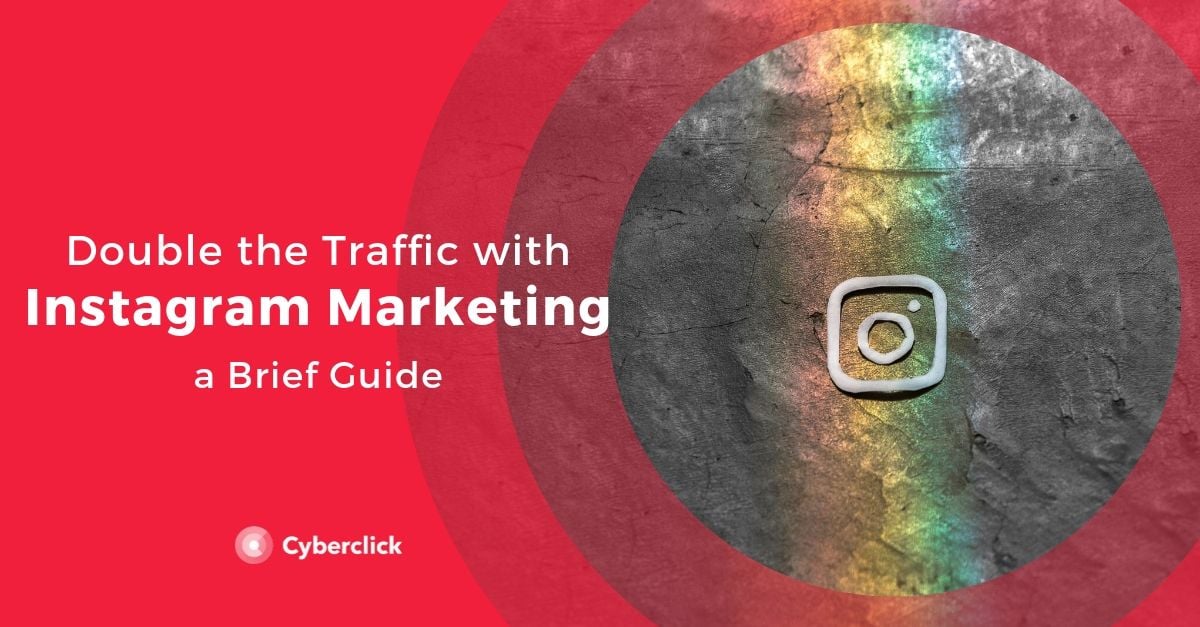Social media has changed the way we interact and communicate with each other, and it has heavily influenced how consumers shop and do business. Currently, there are over 3.2 billion people in the world with a social media account, accounting for 42% of the world’s population. This is excellent news if you're running a small business and are looking to expand and reach more people, because your target audience is right there on social media.
But, an even better indicator of how social media marketing can influence your small business is the fact that 74% of customers rely on social media when buying something. In other words, not only do they seek out specific brands and their products on social media in order to see if they are reputable, but they also keep an eye on what the influencers have to say, which is yet another phenomenon that has emerged as a result of social media.
With that in mind, let’s take a look at our complete guide on how to make use of social media marketing for your small business.
8 Steps of Social Media Marketing for Small Businesses
For a small business with limited resources, budget, and time, setting up and running social media marketing may seem like a daunting task. But, it doesn't have to be. We've laid 8 steps to help you get started in social media marketing:
- Find your Target Audience
- Choose The Right Social Media Platforms
- Use Eye Catching Visuals
- Choose Quality of Quantity
- Join Relevant Conversations Online
- Schedule Your Posts
- Use Integrated Ecommerce Options
- Monitor Your Metrics
1. Figure Out Who Your Target Audience Is
One of the best things about social media is that pretty much every platform enables you to get access to analytics and market data, which should help you learn who your customers are, as well as how they behave on social media when they make their purchases. Thanks to relevant social media metrics, you will be able to perform an audit of your existing social media marketing approach. But, more importantly, you will be able to turn those insights into actionable steps, whether you are running a finance assignment help service or an online store.
2. Choose the Right Social Media Platforms
Knowing who your target audience is should help you pinpoint the social media platforms on which they hang out. That way, you can direct your social media marketing efforts, and budget, to where they will be most effective. For example, if your target audience are millennials and Gen Z, Instagram and TikTok will be good places to spend your time and energy. You should also factor in the type of business you are running. If you are selling beauty products, then you should definitely be on Instagram, as well as YouTube, because they are oriented more toward visuals.
3. Use Eye-Catching Visuals
This doesn’t just apply to Instagram, Pinterest, TikTok, and YouTube, because that’s a given. You should also use high-quality images on all social media platforms, because visuals influence your customers’ purchasing decisions, especially if you are selling products, such as clothing, makeup, or furniture. You can even use memes and inject your social media with some humor. If you are marketing a service, things get a bit more tricky, because photos and videos need to be able to convey your company culture and show productive and happy employees. Perhaps the best option would be to use user-generated content in order to obtain social proof.
4. Choose Quality over Quantity
It might seem like there is a lot of work waiting for you, with all those different social media platforms. To make matters easier, at least at first, you can repurpose your existing content and optimize it for posting on different platforms. It’s also better to focus on just the key platforms and create content which is authentic and which provides value for the viewer. One of the reasons why customers listen to influencers so much is because they are regular people just like them, and not some faceless corporate entity. So, make your social media posts genuine and honest, and your audience will respond accordingly.
5. Take Part in Relevant Social Media Conversations
While taking part in social media conversations is one of the ways of engaging your social media audience, it goes way deeper than that. Being at least aware of these conversations will help you spot trends and developments in your industry, as well as identify your audience’s pain points. Then, respond where necessary and establish your business as an authority resource. You can also treat your social media presence as a way of providing customer support, especially when addressing user complaints and doing damage control if necessary. All those things combined will help you build a relationship with your audience.
6. Schedule Your Posts
Creating a social content calendar will help you create your content in advance and then publish it using scheduling tools. This will automate some of your social media work, and you will only have to access your social media once a day, instead of checking in multiple times a day. Also, while social media marketing is important, it’s even more important to actually grow and develop your business, and create a quality product or service. By automating some of your social media efforts, you will be able to focus on your bottom and your revenue. If your budget allows it, you can hire a social media marketer or a freelancer to handle some tasks for you. Check the best times to post on social media to figure out the best hours for each platform.
7. Implement Social Commerce
Although social media influences your customers’ buying decisions, they may not necessarily use social media when purchasing products or services. However, you can change that, because more and more social media platforms are introducing social commerce. Instagram and Pinterest lead the way, and Facebook’s product catalog feature is especially useful. On your end, you need to prepare detailed product information which should include everything you would see in eCommerce stores, including images, product specification, product description, and price. Also, make sure to keep that information up-to-date, especially if there are frequent changes in your inventory.
8. Monitor Your Performance on Social Media
In order to see if your social media marketing efforts are working, you need to keep track of the most important metrics for your small business. Sure, likes and comments are great, but you should also look at your conversion rate. As we have mentioned, nearly all social media platforms offer analytics tools, so don’t be afraid to make them work for you. You will also be able to identify what doesn’t work, and direct your time and money elsewhere.






Leave your comment and join the conversation